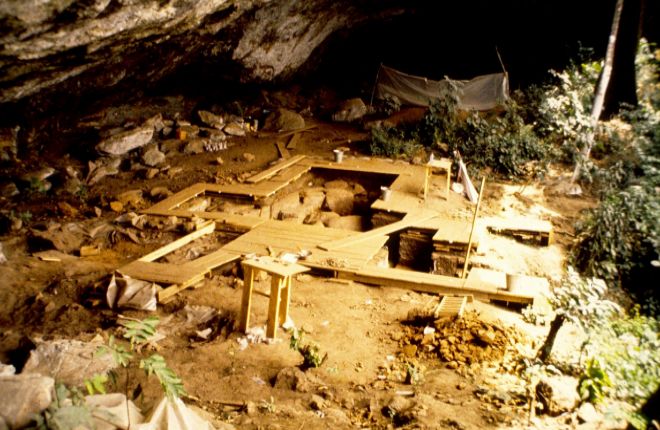Modern human populations bear the genetic mark of the oldest. Each genome is a mosaic created with pieces transmitted by thousands of ancestors; we carry not only our own footprint but also that of those who preceded us. With each new generation random mutations may appear: some of them disappear, others become increasingly frequent until they become part of the genetic signature. If two populations share few or none of these mutations it is likely that they have not crossed because, if they were found and mixed, a record would remain in their DNA.
To reconstruct that genetic past, scientists need not only contemporary data but also remote DNA. This Wednesday, an international team of researchers published in the journal Nature an important advance in the matter: an analysis of ancient human DNA sequences, specifically of four children who lived in Cameroon between 3,000 and 8,000 years ago . These are the oldest genetic samples recovered from West or Central Africa, and their study opens new clues in the search to understand the ancestral relationships between the different populations of sub-Saharan Africa.
Directed by scientists from the Harvard Medical School, the study also included researchers Carles Lalueza-Fox and Íñigo Olalde, from the Institute of Evolutionary Biology (IBE, CSIC-Pompeu Fabra University). "The genomic analysis of ancient and current African populations shows that the origin of our species was a much more complex phenomenon than we thought," explains Lalueza, "and denies the conclusions of other works based solely on mitochondrial DNA analysis."
Thus, the history of humanity would not be marked by immobility and isolation, but by movement and mixing. "In addition, the results are consistent with paleontological findings, which seem to point to a multiregional origin rather than a single population," says the researcher.
Genetic analyzes indicate that four great ancestral lineages emerged between 200,000 and 300,000 years ago . "Our research relates the origin of the human being to these four lines," explains David Reich, head of the research. "The origin of the current hunter-gatherers of central Africa, such as the pygmies; those of the south, called khoisan; those of the east and the rest of modern humans would be in these four lineages." According to Reich, one of them would correspond to the ghost population, without continuity at present, but whose trace is present in the genes of people living in East and West Africa.
The DNA used in these analyzes comes from two children who lived 3,000 years ago and two others from 8,000 years ago. They were unearthed in Shum Laka , a rocky refuge on the western high plateau of Cameroon, inhabited for tens of thousands of years. This place has also been designated as the cradle of the Bantu languages , an extensive and diverse group of languages spoken by more than a third of Africans today. All this makes the site a reference point to understand the history of the continent.
Crossroad
Shum Laka was excavated in the 80s and 90s by Belgian and Cameroonian archaeologists, who discovered there an impressive archeological treasure, with radiocarbon dating spanning the last 30,000 years. Scientists believe that the shelter served several times as a cemetery and have been able to dig up up to 18 human skeletons in the area.
However, the tropical environment and acidic soils are harmful for the preservation of bones and even more for the organic material, so recovering genetic information is a challenge. In this case, Harvard researchers obtained viable samples of the inner ear . "Only 10 or 12 ancient genomes have been sequenced in all of Africa, while there are more than 1,000 in Europe," recalls Lalueza-Fox.
The four children of Shum Laka seem to be more closely related to the current Central African hunter-gatherers, who have a very different ancestry than most of the current Bantúparlantes, than with the modern inhabitants of the region.
"The results suggest that Bantu speakers living today in Cameroon - and in the rest of Africa - do not descend from the population to which Shum Laka's children belonged," says Mark Lipson, a Harvard researcher and lead author. "Although we still don't have enough old DNA evidence to confirm it, our hypothesis is that multiple and diverse populations lived in West and Central Africa several thousand years ago."
According to the criteria of The Trust Project
Know more- Science and Health
- science
Climate crisis Australia's fires have already affected 480 million animals
Archeology An unknown funerary practice of the Pharaohs Egypt: burials under the sacred pavement
Astrophysics The most detailed image of the gas that surrounds supermassive black holes

